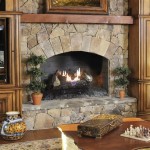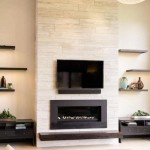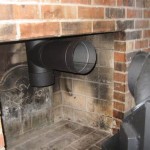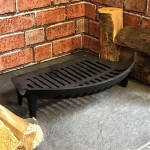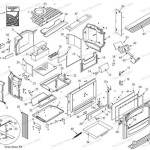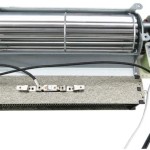Gas Fireplace Inserts: Enhancing Comfort and Efficiency in Minnesota Homes
Minnesota winters are known for their extended periods of cold weather, making efficient and reliable home heating essential. Gas fireplace inserts offer a compelling solution for homeowners seeking to upgrade existing fireplaces, improve energy efficiency, and enhance the aesthetic appeal of their living spaces. These inserts are designed to fit directly into existing fireplace openings, converting traditional wood-burning fireplaces into convenient and clean-burning gas appliances.
The appeal of gas fireplace inserts stems from their ability to provide consistent heat with minimal effort. Unlike wood-burning fireplaces, which require constant tending and produce significant amounts of ash and creosote, gas inserts operate with the simple flick of a switch or the push of a button. This ease of use makes them particularly attractive to busy homeowners or those with mobility limitations.
Beyond convenience, gas fireplace inserts offer significant improvements in energy efficiency. Traditional open fireplaces are notoriously inefficient, often drawing heated air from the room and sending it up the chimney. This creates a negative pressure that forces the heating system to work harder to maintain a comfortable temperature. Gas inserts, on the other hand, are designed to seal off the chimney flue, preventing heat loss and directing the warmth into the room. This results in lower heating bills and a more comfortable living environment.
The range of available gas fireplace inserts is extensive, encompassing various styles, sizes, and heating capacities. This allows homeowners to select an insert that perfectly complements their existing décor and meets their specific heating needs. From traditional designs with realistic-looking logs to contemporary models with sleek glass fronts, there is a gas fireplace insert to suit virtually any aesthetic preference.
Key Benefits of Gas Fireplace Inserts
Gas fireplace inserts offer a multitude of benefits that make them a worthwhile investment for Minnesota homeowners. Understanding these advantages can help individuals make informed decisions about upgrading their existing fireplaces.
Increased Energy Efficiency: One of the primary reasons homeowners choose gas fireplace inserts is their superior energy efficiency compared to traditional wood-burning fireplaces. Open fireplaces typically have an efficiency rating of only 10-20%, meaning that the majority of the heat generated is lost up the chimney. Gas inserts, in contrast, can achieve efficiency ratings of 70-85% or even higher, depending on the model. This dramatic improvement in efficiency translates directly into lower heating bills and a reduced carbon footprint.
The efficiency gains are achieved through several design features. Firstly, gas inserts are designed to seal off the chimney flue, preventing the escape of heated air. Secondly, many models incorporate a fan or blower that circulates the heated air throughout the room, ensuring even distribution of warmth. Finally, some inserts are equipped with programmable thermostats that allow homeowners to precisely control the temperature and heating schedule.
Convenience and Ease of Use: Gas fireplace inserts offer unparalleled convenience compared to wood-burning fireplaces. There is no need to chop, stack, and carry wood, nor is there the messy cleanup of ash and soot. Gas inserts ignite instantly with the flip of a switch or the push of a button, providing instant warmth and ambiance. Many models come with remote controls, allowing homeowners to adjust the flame height, temperature, and fan speed from the comfort of their couch.
The convenience of gas inserts extends beyond ease of use. They also require less maintenance than wood-burning fireplaces. While wood-burning fireplaces need to be regularly cleaned to remove ash and creosote, gas inserts require only annual inspections and occasional cleaning of the glass front. This reduces the time and effort required to maintain a fireplace, freeing up homeowners to enjoy the warmth and ambiance without the hassle.
Enhanced Safety and Cleanliness: Gas fireplace inserts are inherently safer and cleaner than wood-burning fireplaces. Wood-burning fireplaces produce smoke, creosote, and particulate matter that can contribute to indoor air pollution and pose a fire hazard. Gas inserts, on the other hand, burn cleanly, producing minimal emissions and reducing the risk of chimney fires. They also eliminate the need to store wood, which can attract insects and rodents.
Many gas fireplace inserts are equipped with safety features such as oxygen depletion sensors (ODS) that automatically shut off the gas supply if the oxygen level in the room drops too low. This helps to prevent carbon monoxide poisoning, a serious risk associated with improperly vented gas appliances. The sealed combustion design of most gas inserts also prevents fumes and gases from entering the living space, further enhancing safety.
Aesthetic Versatility: Gas fireplace inserts are available in a wide range of styles and finishes to complement any décor. From traditional designs with realistic-looking logs to contemporary models with sleek glass fronts, there is a gas insert to suit virtually any aesthetic preference. Homeowners can choose from a variety of log sets, firebox liners, and trim options to create a customized look that reflects their personal style.
The aesthetic versatility of gas inserts extends beyond their visual appearance. They also offer a range of flame effects that can be adjusted to create a desired ambiance. Some models feature realistic flickering flames, while others offer modern, linear flames that add a touch of sophistication to any room. The ability to control the flame height and intensity allows homeowners to create a cozy and inviting atmosphere for any occasion.
Factors to Consider When Choosing a Gas Fireplace Insert
Selecting the right gas fireplace insert requires careful consideration of several factors. Assessing these elements will help homeowners choose an insert that meets their specific needs and preferences.
Heating Capacity: The heating capacity of a gas fireplace insert is measured in British Thermal Units (BTUs). The appropriate BTU rating will depend on the size of the room to be heated and the climate in which the home is located. In Minnesota, where winters are particularly cold, it is important to choose an insert with a sufficient BTU rating to adequately heat the space. It is generally best to err on the side of caution and choose an insert with a slightly higher BTU rating than is strictly necessary.
To determine the appropriate BTU rating, homeowners should measure the square footage of the room to be heated and consult with a fireplace professional. They can provide guidance on selecting an insert with the appropriate heating capacity based on the specific characteristics of the home.
Ventilation Requirements: There are two main types of gas fireplace inserts: direct vent and B-vent. Direct vent inserts draw combustion air from outside the home and vent exhaust gases directly to the exterior, typically through a coaxial vent system. B-vent inserts, on the other hand, use the existing chimney flue to vent exhaust gases. Direct vent inserts are generally considered to be more efficient and safer than B-vent inserts, as they prevent the backdrafting of exhaust gases into the home.
The ventilation requirements of a gas fireplace insert will depend on the type of insert and the existing fireplace setup. It is important to consult with a qualified installer to ensure that the insert is properly vented and that the venting system meets all applicable codes and regulations.
Fuel Type: Gas fireplace inserts can be fueled by either natural gas or propane. Natural gas is typically less expensive than propane, but it is not available in all areas. Propane is a more versatile option, as it can be stored in tanks and delivered to the home. The choice between natural gas and propane will depend on the availability of natural gas and the homeowner's preference.
If natural gas is available, it is generally the more economical choice. However, if natural gas is not available or if the homeowner prefers the flexibility of propane, propane is a viable alternative. It is important to consult with a gas company to determine the availability of natural gas and the cost of propane in the area.
Aesthetic Style: Gas fireplace inserts are available in a wide range of styles to complement any décor. Homeowners should choose an insert that matches the overall style of the room and their personal preferences. Whether seeking something traditional and timeless, or something modern and sleek, there are numerous aesthetic styles that can be chosen.
Installation and Maintenance of Gas Fireplace Inserts
Proper installation and regular maintenance are crucial for ensuring the safe and efficient operation of a gas fireplace insert. Neglecting these aspects can lead to performance issues, safety hazards, and reduced lifespan.
Professional Installation: Gas fireplace inserts should always be installed by a qualified and licensed professional. Installing a gas appliance without the proper training and experience can be dangerous and may violate local building codes. A professional installer will ensure that the insert is properly connected to the gas line, vented correctly, and complies with all safety regulations.
The installation process typically involves removing the existing fireplace damper, preparing the fireplace opening, connecting the gas line, installing the venting system, and testing the operation of the insert. A professional installer will also provide guidance on the safe and proper use of the insert.
Annual Inspections: Gas fireplace inserts should be inspected annually by a qualified technician. These inspections identify potential problems before they escalate into costly repairs or safety hazards. The technician will check the gas connections for leaks, clean the burner and pilot light, inspect the venting system, and test the safety features of the insert.
Annual inspections are particularly important for ensuring the safe and efficient operation of the insert. Regular inspections can help to prevent carbon monoxide poisoning, chimney fires, and other safety hazards.
Regular Cleaning: The glass front of a gas fireplace insert should be cleaned regularly to remove soot and grime. A specialized glass cleaner designed for gas fireplaces should be used to avoid damaging the glass. The burner and pilot light may also need to be cleaned periodically to remove debris and ensure proper operation.
Regular cleaning not only improves the aesthetic appearance of the insert but also helps to maintain its efficiency. A clean glass front allows more heat to radiate into the room, while a clean burner and pilot light ensure proper combustion.
By understanding the benefits, considerations, and maintenance requirements of gas fireplace inserts, Minnesota homeowners can make informed decisions about upgrading their existing fireplaces and creating a warm, comfortable, and efficient living environment.

Inserts Custom Fireplace And Chimney Care Fireplaces Stoves Minneapolis Mn

Kozy Heat Fireplaces And Inserts Portland Or Nw Natural Appliance Center

Condor Fireplace Stone Company Minnesota We Can Do It All
Inserts Glowing Hearth Home

Gas Fireplaces Waconia Comfort

Contemporary Gas Fireplace Inserts Provide Several Benefits Kozy Heat Fireplaces

Minneapolis St Paul Gas Fireplace Inserts Replacement And Installation

Heat Glo Supreme Gas Insert Fireside Hearth Home

Gas Inserts Minnesota Grill Fireplace

Fireplaces Custom Fireplace And Chimney Care Inserts Stoves Minneapolis Mn


